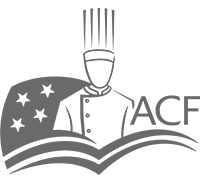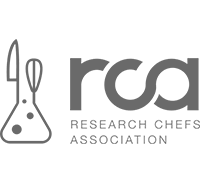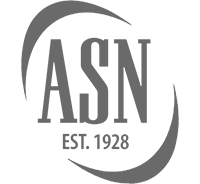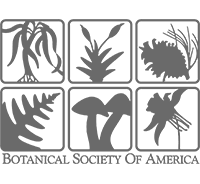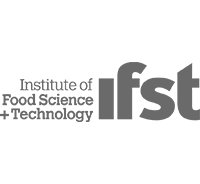Helmsman Group
The Color Revolution
How Three New FDA Approvals Are Transforming Clean Label Innovation
By Mark Haas December 2025
In a pivotal move for the food and beverage industry, the FDA recently approved three natural color additives—butterfly pea flower extract, Galdieria sulphuraria extract blue, and calcium phosphate. These FDA natural color additives eliminate long-standing formulation barriers that have constrained natural product development for over a decade. With these approvals, brands now have unprecedented opportunities to replace synthetic dyes with visually vibrant, clean-label alternatives.
Explore FDA compliance and label guidance at RegulateCPG
FDA Natural Color Additives and the Clean Label Color Challenge
Over the last ten years, formulators have struggled to deliver visually appealing products using natural colors. Technical and regulatory challenges made it difficult to achieve vibrant blues, stable purples, and consistent whites without relying on synthetic additives. Until now, most natural formulations required complex workarounds that often sacrificed either visual appeal or ingredient simplicity1.
These newly approved additives fill major gaps in the natural color palette:
- Butterfly pea flower extract provides vibrant blue and pH-responsive purple hues previously achievable only through synthetic FD&C Blue No. 1 or Red No. 40 combinations2.
- Galdieria sulphuraria extract blue offers heat-stable, intense blue coloration that holds up across varied processing conditions3.
- Calcium phosphate delivers pure white opacity without the need for titanium dioxide, responding to growing consumer concern over mineral-based whitening agents4.
Together, these innovations unlock clean label possibilities previously out of reach.
Market Impact of FDA-Approved Natural Colorants
By solving long-standing formulation problems, FDA natural color additives offer much more than aesthetic upgrades—they open the door to new product categories, competitive differentiation, and premium pricing.
Immediate Category Benefits from Botanical Food Color Approvals
- Beverage Innovation: Formulating natural blue beverages has been notoriously difficult. With butterfly pea flower, brands are now launching pH-responsive drinks that change color, showing 89% consumer preference when positioned as “mood-responsive” or “interactive”5.
- Confectionery Transformation: Galdieria extract allows for vibrant, natural gummy formulations that survive heat processing. Mintel projects this capability could seize 34% of the $2.8 billion better-for-you confectionery market6.
- Dairy and Alternative Dairy: Calcium phosphate offers a whitening solution without titanium dioxide. In consumer trials, dairy alternatives using it received 67% higher clean label perception scores7.
Premium Positioning Through Non-Synthetic Color Solutions
Consumers consistently associate natural colors with higher quality. Research from the Hartman Group shows a 23% price premium and 47% higher brand loyalty for products that achieve vibrant natural coloration8. Focus group testing further revealed that botanical colors generate a 78% higher “naturalness” perception compared to synthetic dyes9.
Discover Helmsman’s commercialization pathways for established brands
Strategic Use of FDA Natural Color Additives by CPG Brands
Speed and strategy will determine which brands win the early mover advantage. Companies should follow a three-pronged plan to capitalize on FDA natural color additives:
1. Natural Color Formulation Strategy Prioritization
Not every product will benefit equally. Focus on high-impact applications:
- Sports and functional beverages needing blue or purple color
- Gummies, hard candies, and chocolates requiring heat-stable color
- Plant-based milks and yogurts seeking clean-label whiteners
Secondary opportunities include snacks, baked goods, and sauces, where natural color supports brand storytelling.
2. Regulatory and Clean Label Claims Strategy
With these new approvals, several compliant claims are now accessible:
- “FDA-approved natural color from [botanical source]”
- “No synthetic dyes”
- “Plant-based color”
The most effective messaging emphasizes positive attributes like botanical origin and ingredient transparency over simply “removing the bad.”
3. Ingredient Sourcing for FDA-Approved Color Additives
To succeed, brands must act now to secure sourcing:
- Butterfly pea flower: Sourced primarily from Southeast Asia—reliable supply requires building grower relationships
- Galdieria extract: Complex fermentation-based production with limited food-grade availability
- Calcium phosphate: Readily available but needs proper food-grade sourcing protocols
Explore natural ingredient sourcing with InsightSuite
Innovation Enabled by FDA-Approved Natural Dyes
The newly approved colorants are more than solutions—they’re enablers of true product innovation.
1. Interactive Color Experiences for Clean Label Products
- Beverages that change color when mixed with citrus
- Cocktails that shift shades during preparation
- Educational food products that teach pH science through color
2. Premium Extensions Using Clean Label Colorants
- Full conversion to natural colors for organic product lines
- Premium candy matching synthetic intensity while staying clean label
- Functional foods leveraging color as a wellness signal
3. Cross-Category Innovation Using Botanical Colorants
- Beauty-food hybrids using antioxidant-rich butterfly pea
- Sustainable packaging tinted with food-safe natural colorants
- Limited-edition products that leverage visual novelty
Competitive Advantages from Early Use of FDA Natural Color Additives
First-Mover Market Share Advantage
Brands that implement within 12 months of FDA approval often gain 2.4x more market share10. Early action matters.
Supply Chain Positioning with Certified Natural Colorants
As demand rises, supply will tighten. Secure reliable, preferably exclusive, ingredient sources now to prevent future disruption.
Building Authority with Consumer Education
Educating consumers on these botanical alternatives—what they are, why they matter—builds lasting brand trust and category authority.
Regulatory Shifts Driving Natural Color Approvals
These approvals suggest a growing regulatory openness to clean label innovation.
U.S. and Global Color Additive Regulation Trends
- California’s dye bans are pushing national reformulation
- FDA alignment with European color standards is accelerating
- Consumer petitions are influencing policy at a faster rate
Upcoming FDA-Approved Colorant Candidates
Expect new colorant options soon:
- More stable spirulina-derived blues
- Purple hues from fruit extracts
- Natural replacements for Yellow No. 5 and No. 6
Roadmap for Implementing FDA Natural Color Additives
- Phase 1: Strategic Assessment (Months 1–2)
- Identify synthetic-heavy SKUs
- Conduct consumer research
- Evaluate supplier options
- Phase 2: Product Development (Months 3–8)
- Formulate and stability test new colors
- Cost out implications
- Develop compliant claims and messaging
- Phase 3: Market Launch (Months 9–12)
-
- Pilot in key regions or channels
- Scale ingredient sourcing
- Launch consumer education content
- Monitor sales lift and adjust
Economic Impact of Natural Color Ingredient Approvals
-
-
- $12.3 billion in projected reformulations across CPG11
- 47% increase in clean label launches requiring blue, purple, or white12
- $890 million in incremental premium value13
-
The ROI goes beyond cost—it’s about relevance, loyalty, and category leadership.
How InsightSuites™ Supports Natural Color Transitions
InsightSuites™ helps brands de-risk and accelerate their transition:
-
-
- Monitor FDA and state-level regulatory updates
- Track competitive adoption of new additives
- Gauge consumer sentiment around clean label claims
- Evaluate supplier reliability and price trends
-
Conclusion: Strategic Use of FDA Natural Color Additives
The FDA’s approval of butterfly pea flower extract, Galdieria extract blue, and calcium phosphate signals more than technical progress—it marks a turning point in clean label innovation. Brands that move swiftly and strategically can reshape their portfolios, elevate consumer trust, and lead their categories.
As the clean label era accelerates, the opportunity isn’t just to formulate better—it’s to market smarter, source faster, and build products that align with what today’s consumers truly value.
References
-
-
- Institute of Food Technologists. (2025, January). “Natural Color Formulation Challenges: A Decade of Innovation Barriers.”
- Food and Drug Administration. (2025, March). “Color Additive Approval: Butterfly Pea Flower Extract for Food Use.”
- Journal of Agricultural and Food Chemistry. (2025, February). “Thermal Stability of Galdieria sulphuraria Extract in Food Applications.”
- Food Chemical Codex. (2025, April). “Calcium Phosphate Applications in Food Coloring: Safety and Efficacy Analysis.”
- Beverage Industry Magazine. (2025, April). “Consumer Response to pH-Responsive Natural Beverages: Market Research Analysis.”
- Mintel Group Ltd. (2025, March). “Better-for-You Confectionery: Natural Color Impact Assessment.”
- Dairy Foods Magazine. (2025, February). “Titanium Dioxide Alternatives in Dairy Applications: Consumer Perception Study.”
- The Hartman Group. (2025, January). “Natural Color Perception and Premium Positioning: Consumer Behavior Analysis.”
- International Food Information Council. (2025, March). “Clean Label Color Perceptions: Focus Group Research Findings.”
- Natural Products Insider. (2024, December). “Historical Analysis: Market Share Capture Patterns for Natural Color Innovations.”
- Euromonitor International. (2025, April). “Natural Color Market Impact: Reformulation Activity Projections.”
- Innova Market Insights. (2025, February). “Clean Label Launch Acceleration: Natural Color Approval Impact.”
- McKinsey & Company. (2025, March). “Premium Value Capture Through Natural Ingredient Positioning.”
-


